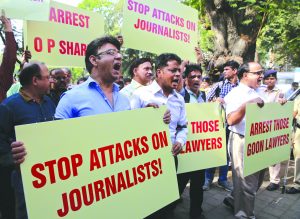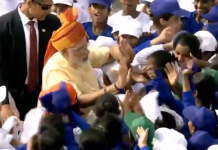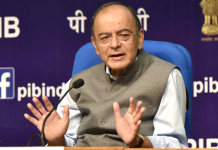 When the Reporters Without Borders (RSF), a Paris based body released its World Press Freedom Index 2019 showing that India’s rank had dropped down to 140 out of 180 countries, the report was taken with a pinch of salt. Then came the 2019 Global Impunity Index of Committee to Protect Journalist (CPJ) released on October 29, 2019 followed by a study “Getting Away with Murders” by two journalists Geeta Seshu and Urvashi Sarkar released on December 23, 2019.
When the Reporters Without Borders (RSF), a Paris based body released its World Press Freedom Index 2019 showing that India’s rank had dropped down to 140 out of 180 countries, the report was taken with a pinch of salt. Then came the 2019 Global Impunity Index of Committee to Protect Journalist (CPJ) released on October 29, 2019 followed by a study “Getting Away with Murders” by two journalists Geeta Seshu and Urvashi Sarkar released on December 23, 2019.
In recent years, journalism has become a dangerous profession in India and media persons had to lose their lives while pursuing investigative reports on illegal activities, land grab, corruption, educational malpractices and mafia gangs controlling the trade in anything from sand, crushed stones and timber to liquor, water tankers and oil.
At least 198 serious attacks were recorded on reporters during the period 2014 to 2019, and of these, 36 happened in 2019 alone. Six of these are fairly recent, having happened during the protests over the Citizenship Amendment Act. At least 40 journalists were killed — 21 of them were confirmed to be related to their journalistic work. Journalists Geeta Seshu and Urvashi Sarkar, whose study was funded by Thakur Foundation, chose 63 cases in all to follow up on — where scribes were found to have been attacked for their investigative work — and found a near-zero conviction rate.
It found that “Of the 63 cases studied, FIRs were lodged in only 25 cases. In 18 of these, the cases have not progressed beyond registering of the FIR. Charge sheets were filed in three cases but the process stalled thereafter. In only four cases, a trial has commenced.”
A majority of the journalists attacked or killed belong to small towns and villages, working with regional media as correspondents or stringers. They are the primary information-gatherers, reporters and messengers on corruption, malpractices and unlawful activities of business people, powerful politicians, police and security forces. Powerful criminal gangs wield political clout as they flout the law while law-enforcers and the civic administration are either indifferent or complicit in this criminal activity.
The reportage on widespread corruption and malpractices and the more organized illegal activities such as the rampant sand mining across the country, invite bloody reprisal from a well-entrenched network of political power, criminal agents and complicit law enforcing authorities. CPJ’s 2019 Global Impunity Index, released on 29 October 2019, spotlights countries where journalists are slain, and their killers go free. During the 10-year index period ending 31 August 2019, 318 journalists were murdered for their work worldwide, and in 86% of those cases, no perpetrators have been successfully prosecuted. Last year, CPJ recorded complete impunity in 85% of cases.
For the past several years, India has ranked among the countries with the highest number of journalist deaths. The International Federation of Journalists listed India as the eighth most dangerous country for journalists. When Gauri Lankesh of Gauri Lankesh Patrike was fatally shot, Reporters Without Borders had said that journalists in India “are increasingly the targets of online smear campaigns by the most radical nationalists, who vilify them and even threaten physical reprisals.”
In the Gauri Lankesh assassination case, the Special Investigation Team (SIT) filed a 9,235-page charge sheet against 18 persons in November 2018, of which two were still at large more than a year later. However, the case is expected to take much longer as the conspirators have been linked to the earlier murders of two rationalists and have an extensive battery of lawyers preparing to dismantle the case.
In March 2018, three Indian journalists were killed in deliberate hit-and-run accidents within 24 hours on 26 March 2018. Sandeep Sharma of News World, who had been investigating the powerful sand mafia in the state, was murdered in Madhya Pradesh, while Navin Nischal– working for Dainik Bhaskar– was killed on March 26, 2018 in Bihar. Achutananda Sahu of Doordarshan was killed in crossfire on 30 October 2018.
The study on the killings and attacks on journalists in India by Geeta Seshu and Urvashi Sarkar funded by Thakur Family Foundation, Inc found that there is “near-zero rate of conviction” because the nexus between political power and the law-enforcing administration is often very strong and underscores the impunity that accompanies these cases. In other cases, investigating agencies are either indifferent or complicit. The result is a very poor rate of conviction. Since 2010, there have been over 30 cases of deaths of journalists due to their professional work. Convictions have been secured in only three of these cases.
Highlights
- There were 40 killings of journalists between 2014-19. Of these, 21 have been confirmed as being related to their journalism.
- Of the over 30 killing of journalists since 2010, there were only three convictions. The cases were J Dey, killed in 2011; Rajesh Mishra, killed in 2012 and Tarun Acharya, killed in 2014.
- In a fourth case of journalist Ram Chandra Chhattrapati, killed in 2002, it took 17 years for justice to be delivered in the life imprisonment order for Dera Sacha Sauda chief Gurmeet Ram Rahim.
- The study documented 198 serious attacks on journalists in the period between 2014-19, including 36 in 2019 alone.
- Journalists have been fired upon, blinded by pellet guns, forced to drink liquor laced with urine or urinated upon, kicked, beaten and chased. They have had petrol bombs thrown at their homes and the fuel pipes of their bikes cut.
- Journalists covering conflict or news events were specifically targeted by irate mobs, supporters of religious sects, political parties, student groups, lawyers, police and security forces.
- Attacks on women journalists in the field were found to have increased. The targeted attacks on women journalists covering the Sabarimala temple entry were sustained and vicious. A total of 19 individual attacks of women journalists are listed in this report.
- Perpetrators of the killings and attacks included government agencies, security forces, political party members, religious sects, student groups, criminal gangs and local mafias.
- Of the 63 cases studied, First Information Reports (FIRs) were lodged in only 25 cases. And in 18 of these, the case has not progressed beyond the registering of the FIR.
- In 18 other cases where journalists did file complaints (but no FIRs registered), counter complaints were filed in three cases. In 12 cases, there is no information at all and even the affected journalists do not know what happened post the attacks.
Attacks on women journalists
Women journalists have been the target of online harassment, faced death and rape threats, and stalked and their personal data shared online. There has been considerable focus on the gendered nature of the harassment, often stigmatizing and sexualizing them for their opinions and their work. Apart from this severe and relentless online harassment, the ‘offline’ targeting of women journalists in the field, has been brutal. In 2012, Arunachal Times 44 editor Tongam Rina survived a heinous attack. In 2017, the Gauri Lankesh Patrike editor Gauri Lankesh was killed by members of right-wing organisations for her strong campaign against hindutva politics.
The petrol bomb attack on the residence of Shillong Times editor Patrician Mukhim, the hounding of journalist Malini Subramaniam from Bastar, the attack on journalists Sandhya Ravishankar or M Suchitra while covering illegal sand mining are only some instances before us.
letters@tehelka.com













